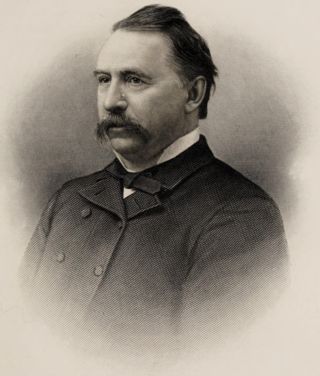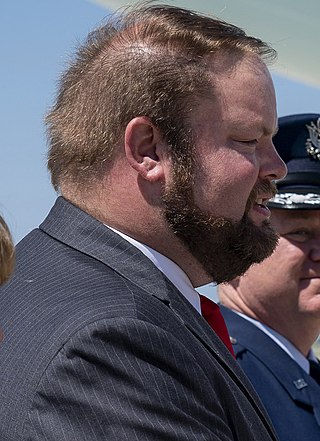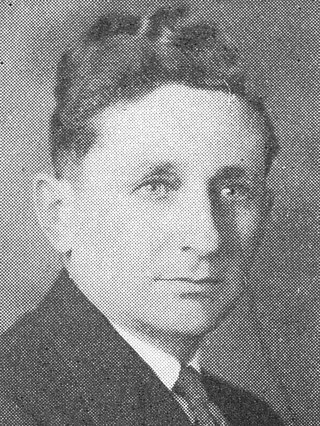Related Research Articles

Davis Hanson Waite was an American politician. He was a member of the Populist Party, and he served as the eighth Governor of Colorado from 1893 to 1895.

John Winans was an American lawyer and Democratic politician from Janesville, Wisconsin. He served one term in the U.S. House of Representatives, representing Wisconsin's 1st congressional district during the 48th Congress (1883–1885). He then served as the 25th mayor of Janesville, from 1885 to 1889. Earlier, he represented Janesville and central Rock County for six years in Wisconsin State Assembly.

The Speaker of the Wisconsin State Assembly is the presiding officer of the Wisconsin State Assembly, the lower house of the Wisconsin Legislature. Article IV of the Constitution of Wisconsin, ratified in 1848, establishes the legislature and specifies the election of officers. The role and responsibilities of the speaker are defined in the Assembly Rules, originally in Rule 1, and also, under the present rules, Rule 3.
Doris Jean Hanson was an American realtor, politician, and public administrator. She was the 7th secretary of the Wisconsin Department of Administration, and the first woman to hold that office. Later she was a member of the Wisconsin State Assembly, representing the east side of the city of Madison and central Dane County.

Tyler August is an American politician and legislator. He is the majority leader of the Wisconsin State Assembly since 2023 and previously served as the chamber's speaker pro tempore. A Republican, he was first elected to the Assembly in 2010, representing eastern Walworth County.
Carl Minkley was an interior decorator, housepainter, labor movement activist and Socialist Party of America politician from Milwaukee, Wisconsin who served two terms in the Wisconsin State Assembly.

Arthur Koegel was a Socialist bricklayer from Milwaukee who served five terms from 1933 to 1942 as a member of the Wisconsin State Assembly.
Norman C. Anderson was a Swedish American lawyer and Democratic politician from Madison, Wisconsin. He was the 68th speaker of the Wisconsin State Assembly and served a total of 18 years in the Assembly, representing northeast Madison and neighboring suburbs. He also served as chief clerk of the Assembly during the 1959 session.

The Ninety-Fifth Wisconsin Legislature convened from January 3, 2001, to January 6, 2003, in regular session, and also convened in three special sessions.
Sylvester Hanson was a member of the Wisconsin State Assembly, representing the 2nd district of Walworth County. He served as a Republican during the Session of 1862.
Frank H. Hanson was a member of the Wisconsin State Senate and the Wisconsin State Assembly.

Sebastian Albert Schindler was a member of the Wisconsin State Assembly.

The 1848 Wisconsin gubernatorial election was held on May 8, 1848. This was the election for the first Governor of Wisconsin, which became a U.S. state that year, as it was held concurrent with a public referendum to ratify the Constitution of Wisconsin.

The 1849 Wisconsin gubernatorial election was held on November 6, 1849. Democrat Nelson Dewey won the election with 52% of the vote, winning his second term as Governor of Wisconsin. Dewey defeated Whig Party candidate Alexander L. Collins and Free Soil Party candidate Warren Chase.

The One Hundred Fifth Wisconsin Legislature convened from January 4, 2021, to January 3, 2023, in regular session. The Legislature also held two extraordinary sessions and six special sessions during the term.
The Second Legislative Assembly of the Wisconsin Territory convened from November 26, 1838, to December 22, 1838, from January 21, 1839, to March 11, 1839, and from December 2, 1839, to January 13, 1840, in regular session. The Assembly also convened in an extra session from August 3, 1840, to August 14, 1840.
The Third Legislative Assembly of the Wisconsin Territory convened from December 7, 1840, to February 19, 1841, and from December 6, 1841, to February 19, 1842, in regular session.

The Fifth Legislative Assembly of the Wisconsin Territory convened from January 4, 1847, to February 11, 1847, and from February 7, 1848, to March 13, 1848, in regular session. The Assembly also convened in special session from October 18, 1847, to October 27, 1847, to organize a second constitutional convention after the failure to adopt the first Wisconsin Constitution.
William Shew was a farmer and businessman from Oak Creek, Wisconsin and Cordova, Illinois who served multiple terms in the Wisconsin Territory House of Representatives representing Milwaukee County, and was Speaker of the House of that body during the first (1847) session of the 5th Wisconsin Territorial Assembly, as well as holding various local government posts.

The Eighty-First Wisconsin Legislature convened from January 1, 1973, to January 6, 1975, in regular session, and also convened in three special sessions.